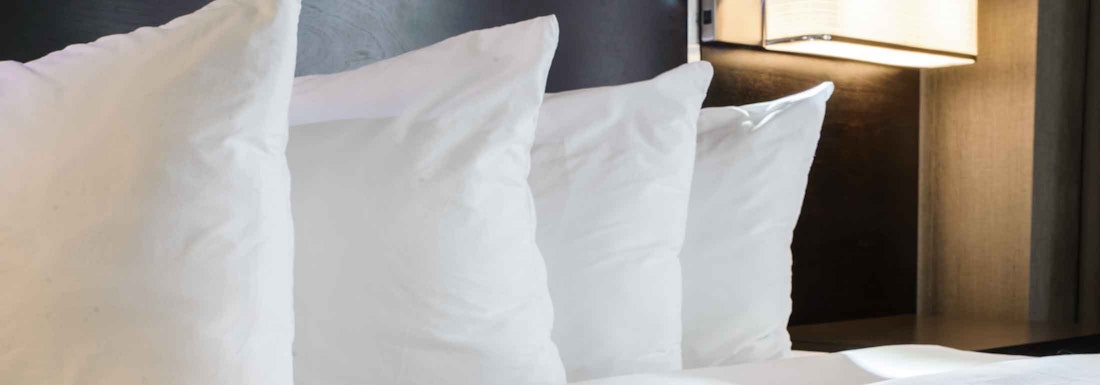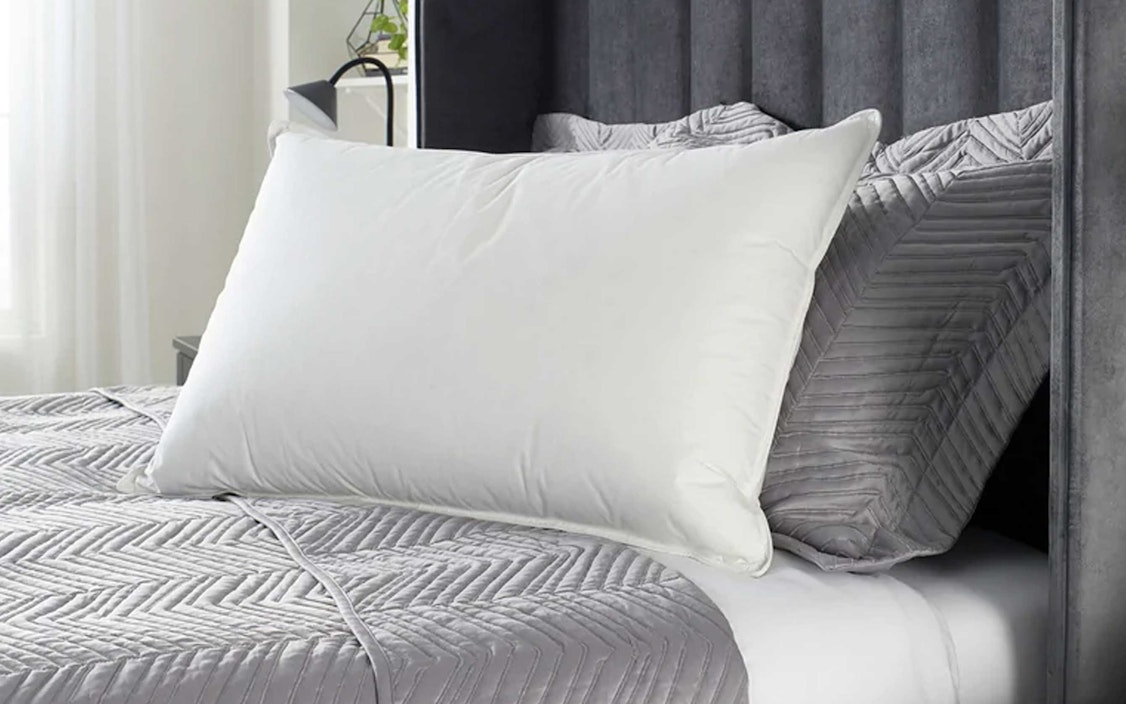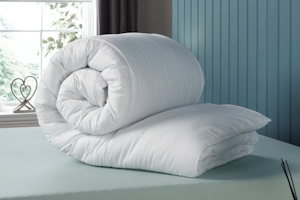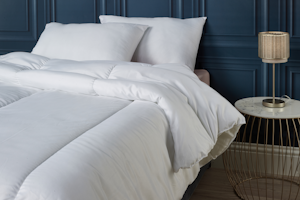20 Mar 2025

How Many Pillows Should You Sleep With?
09 Jun 2023
In the creation of the most optimal sleeping environment possible, you should make your pillows a priority. This element of your bedding is not only important for the overall comfort of the bed; your pillows must also properly support your body while you sleep, preventing body pains and maintaining the proper alignment of your spine. This leads to the question of how many pillows you should sleep with to ensure you wake up both well-rested and pain-free.
Broadly speaking, sleep experts generally advise that you should sleep with 1 to 2 pillows under your head at most. With that said, there are a few considerations you must make when deciding exactly how many pillows would be best for you. It’s primarily important to take into account your typical sleeping position; this greatly influences which parts of your body need the most support, thus determining the ideal number and placement of the pillows. A further consideration is the size and type of the pillows in question; these factors impact the pillow’s supportive qualities, which also influences how many of them you should use.

How Many Pillows Should You Sleep With?
The general consensus among sleep experts is that you should sleep with no more than 1 to 2 pillows beneath your head. However, in reality, there is no single definitive answer to the question of what the ideal number of pillows to sleep with is. The exact answer to this question can vary depending on your individual situation.
Beyond the general advice stated above, there are several factors to consider when deciding how many pillows you should use while sleeping. For instance, aspects like the size, filling, and firmness of your pillows will influence their total height when stacked or not; as such, this ultimately influences the number of the pillows you should use at once. You must also consider your typical sleeping position, as well as your propensity for neck or back pain; these factors impact the amount of support you need your pillows to provide, which again determines the ideal number of pillows you should sleep with.
So, with all of that in mind, the answer to this question lies in the specifics of your situation. To help you decide how many pillows to use, we’ve explained each of these aforementioned factors in more detail below.

How Many Pillows Should Side Sleepers Sleep With?
Experts recommend that side sleepers should sleep with two pillows; one pillow should be placed under the head, while the other should be positioned between the knees. This arrangement ensures the proper support of both the upper and lower body while sleeping on your side.
When you sleep on your side, this position places a particular strain on your spine, hips, and lower back. Placing a pillow between your knees is the best way to relieve this pressure, reducing the likelihood of aches and pains at these pressure points. On top of this, the pillow will help to keep your spine aligned while you’re in the side-sleeping position. As a note on firmness, you should use a soft to medium-support pillow under your head; then, between the knees, it’s better to use a slightly firmer pillow due to the increased pressure at these points.
How Many Pillows Should Back Sleepers Sleep With?
Back sleepers should ideally sleep with 3 pillows; one pillow should be placed beneath the head, one under the lower back, and one under the knees. This is the best configuration to keep all parts of the body well-supported from head to toe when sleeping on your back.
Technically speaking, sleeping on your back is the best position out of all in regard to your spinal health. Still, to give your body optimal support, you should place a soft pillow under your lower back; this will take the pressure off your spine, also supporting its natural curve and alignment. Placing an additional soft pillow beneath the knees raises them slightly, further contributing to comfort in this position.
How Many Pillows Should Stomach Sleepers Sleep With?
Stomach sleepers should sleep with no more than 1 pillow placed beneath the head. This pillow should be soft in order to keep your head as low as possible while sleeping on your front.
Contrasting the previous section, sleeping on your stomach is generally considered to be the worst position for your spinal health. Sleeping on your front places an immense amount of pressure on the spine, more so than any other sleeping position; this is why experts typically recommend against sleeping on your front under any circumstances. If you must sleep in this position, it’s actually best to use no pillows at all to maintain the alignment of your spine; otherwise, you should use no more than one soft pillow to cushion your head when sleeping on your front.

Other Factors to Consider When Choosing How Many Pillows to Sleep With
In the final decision of how many pillows you should sleep with, you must also factor in the specifics of the pillows in question. Both the loft (i.e. thickness) and the type of filling the pillows contain will have an impact on how many of them you should use.
Pillow Loft
Pillow loft is simply the bedding industry term for a pillow’s height or thickness. This measurement varies between products, with all pillows falling under one of three broad categories:
- Low-loft pillows (less than 3 inches thick)
- Medium-loft pillows (between 3 and 5 inches thick)
- High-loft pillows (over 5 inches thick)
This is a major determining factor in the number of pillows you sleep with. For instance, it may only take one high-loft pillow to provide sufficient support to your head; however, with lower-loft pillows, it may instead be necessary to stack multiple pillows to create this equivalent height. Similarly, different lofts may be better suited for different purposes; low to medium-loft pillows are best for your head, whereas you would typically opt for a higher-loft pillow to support other parts of your body.
Pillow Filling
Another determining factor in the supportiveness of a pillow is the filling it contains. Low-quality pillows with cheap synthetic fillings will offer less fullness in comparison to higher-quality natural or synthetic pillows.
Pillows filled with natural materials such as feathers and down, or those utilizing a synthetic down alternative, usually offer superior support compared to their less premium counterparts. This enhanced support can be attributed to the intrinsic structure of these fillings. Given that feathers and down are naturally excellent insulators, they excel in crafting a cushion that's both soft and dense. To maintain this plush feel and ensure optimum support, it's vital to regularly fluff a pillow.
To use one of our pillows as an example, our Luxury Goose Feather & Down Pillow contains 90% feather and 10% down; this is an ideal balance between the two materials, as the feathers provide support, while the down filling enhances the pillow’s sumptuous feel. It would likely take multiple pillows of a lower quality to match the supportiveness of one natural pillow such as this.



